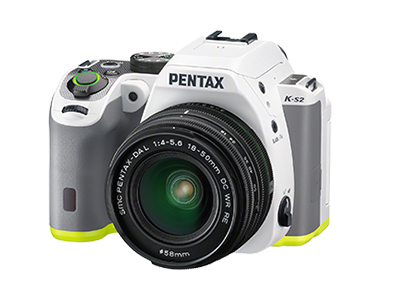Tom's Guide Verdict
The K-S2 offers several appealing features, including weatherproofing and sensor-shift image stabilization, but its video quality falls short.
Pros
- +
Weather-sealed body and kit lens
- +
In-camera image stabilization
- +
Large viewfinder with 100 percent field of view
- +
Vari-angle (swiveling) LCD
- +
Dual command dials
Cons
- -
Plasticky feel, poor video quality
Why you can trust Tom's Guide
Who it's for: Entry-level or enthusiast photographers who want an all-around camera — especially for the outdoors — and don't care about video.
Following close on the heels of Nikon's D5500, the 20-megapixel Pentax K-S2 ($800 with 18-50mm kit lens) fits neatly into the same class of midrange DSLRs that are user-friendly for casual shooters and sufficiently sophisticated for enthusiasts. Better yet, the Pentax K-S2 is weatherproofed to withstand the elements. Although this camera doesn't excel at video recording, overall, it's a good DSLR for all-weather shooting.
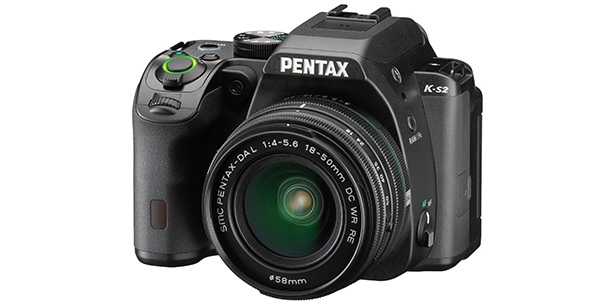
Design: Ready for Any Weather
Measuring 4.8 x 3.6 x 2.6 inches, the Pentax K-S2 is the smallest weatherproof DSLR on the market. It's a little smaller than the Nikon D5500 (which is not weather sealed), but the K-S2's 23.9-ounce body makes it almost 10 ounces heavier. The extra heft helps balance the camera when you're shooting with longer lenses, and it isn't a burden to walk around with the K-S2 and its collapsible 18-50mm kit lens, even for stretches of several hours.

Constructed of reinforced polycarbonate over a metal chassis, the K-S2 has a plastic but fairly sturdy feel. It's available in several color schemes, with bottom panel accents including black, white, desert beige, stone gray and forest green. With 100 seals, the camera is protected from dust, rain, sand and other elements, and is capable of operating in temperatures between 32 and 104 degrees Fahrenheit (0 to 40 degrees Celsius). That makes it perfect for outdoor activities, from cool-weather hikes to sun-filled days at the beach (if it's splashed, but not submerged). You'll need a weather-resistant lens, such as the 18-50mm WR kit model, to complete the setup.
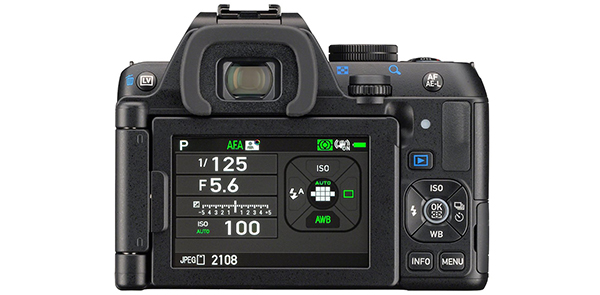
Comfortably contoured, the K-S2's deep grip provides a solid handhold. The camera is equipped with a large pentaprism viewfinder that's usually found only in higher-end models. An LCD within the viewfinder features large, bright text that makes it easy to read data, including shutter speed, f/stop and ISO. The viewfinder also features a view of about 100 percent (rivals like the Nikon D5500 achieve about 95 percent), so what you see in the viewfinder is pretty much what you'll get.
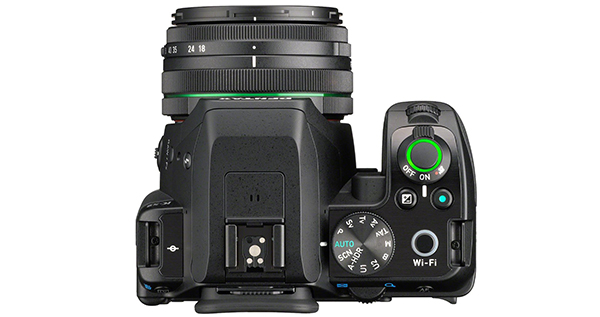
A 3-inch, 640 x 480-pixel, vari-angle LCD is a little smaller than the Nikon D5500's 3.2-inch monitor but offers the same convenience for shooting at different angles and folding against the camera body for safe transport. When you flip the LCD to face forward for selfies in live view, the Wi-Fi button doubles as a shutter release. As a bonus, the monitor's brightness, saturation and color are adjustable.
A single SD/SDHC/SDXC card slot is available. The K-S2 also features a pop-up flash and a hot shoe for an external flashgun.
MORE: Best DSLRs for Any Photographer
Image Quality: Pleasing in Good Light
Like the Nikon D5500 (see review), the K-S2 does not have an anti-aliasing filter, which slightly blurs images to reduce the chance of wavy moiré patterns. Unlike the D5500, the K-S2 offers an AA Filter Simulator. But other than when the device was in movie mode, I didn't notice any moiré, so I kept the filter turned off to get the maximum sharpness. Although the kit lens captured good details, a higher-end lens would probably take better advantage of the K-S2's AA filterless resolution. We requested a second lens from Pentax but did not receive one in time to post results here.
By default, the camera's Custom Image mode is set to Bright, with options for Natural, Landscape and Vibrant, among others. The parameters (saturation, hue, high key/low key, contrast, sharpness) of each picture setting can be adjusted. I shot most test images on Bright, although there wasn't much difference between Bright and Natural under most conditions.
The colors of this playhouse were reproduced accurately, and clearly showed the vibrant hues of the structure along with the subtler colors of the natural vegetation in the background.

If you want to add a little pizzazz to your images, check out the Advanced HDR feature. Just press the shutter button, and the K-S2 automatically captures three images at different exposure levels and combines them. You can use the rear command dial to set the EV compensation (bracketing) for the lightest and darkest of the three photos. Aside from producing a slight halo effect around some of the roof's edges, the camera did an excellent job of blending the three exposures — even when shooting handheld in this static image of the playhouse on the left. The image at the right was shot as a normal, single exposure.
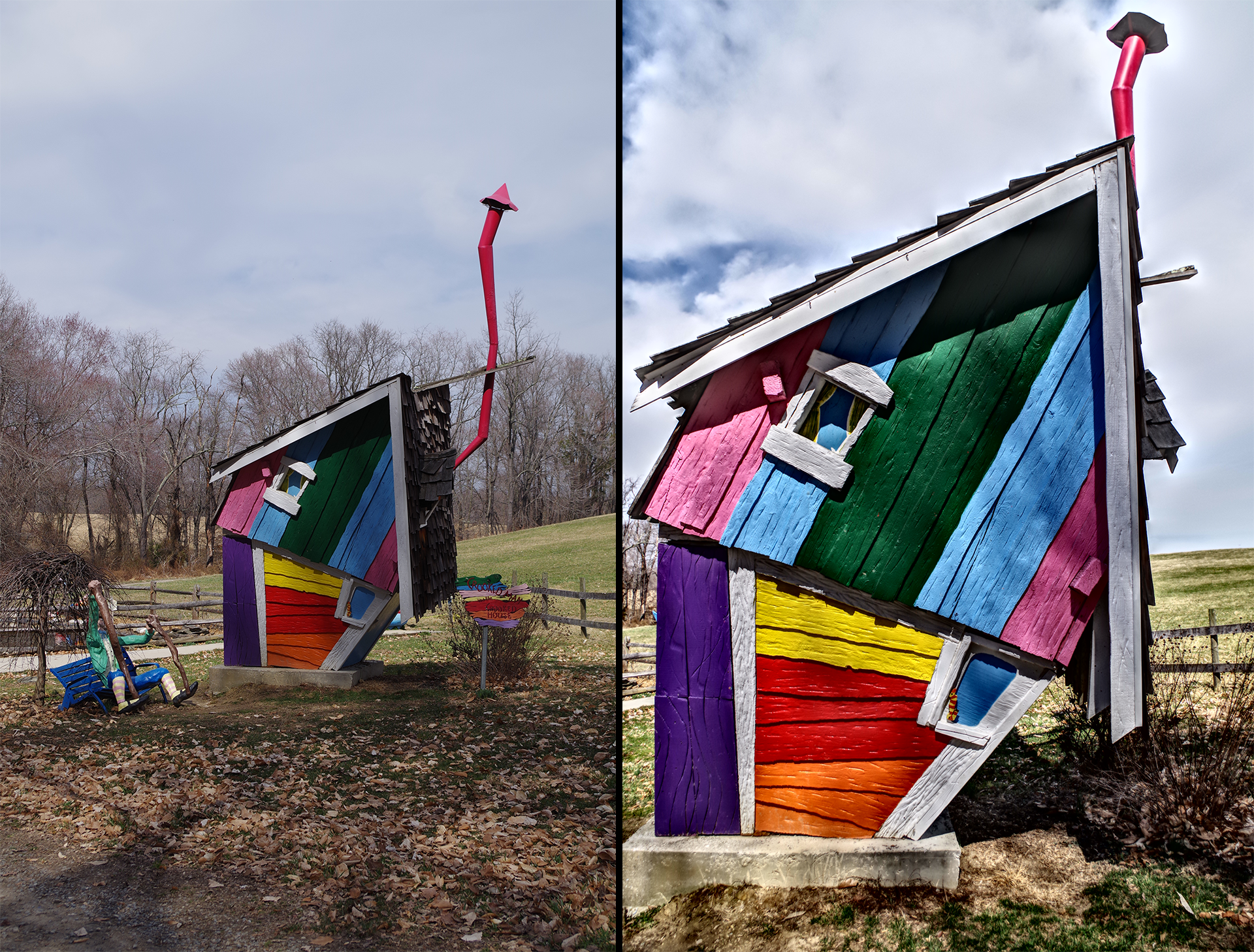
Exposures were generally on target, especially when I used center-weighted metering when the main subject filled the middle of the frame. Unlike the Nikon D5500, which tends to expose for highlights, the K-S2 favored shadow details, sometimes leaving highlights a little overexposed. But, as you can see from the image below, the camera's dynamic range kept most of the details in the shadow areas of the field as well as it did in the overcast sky.
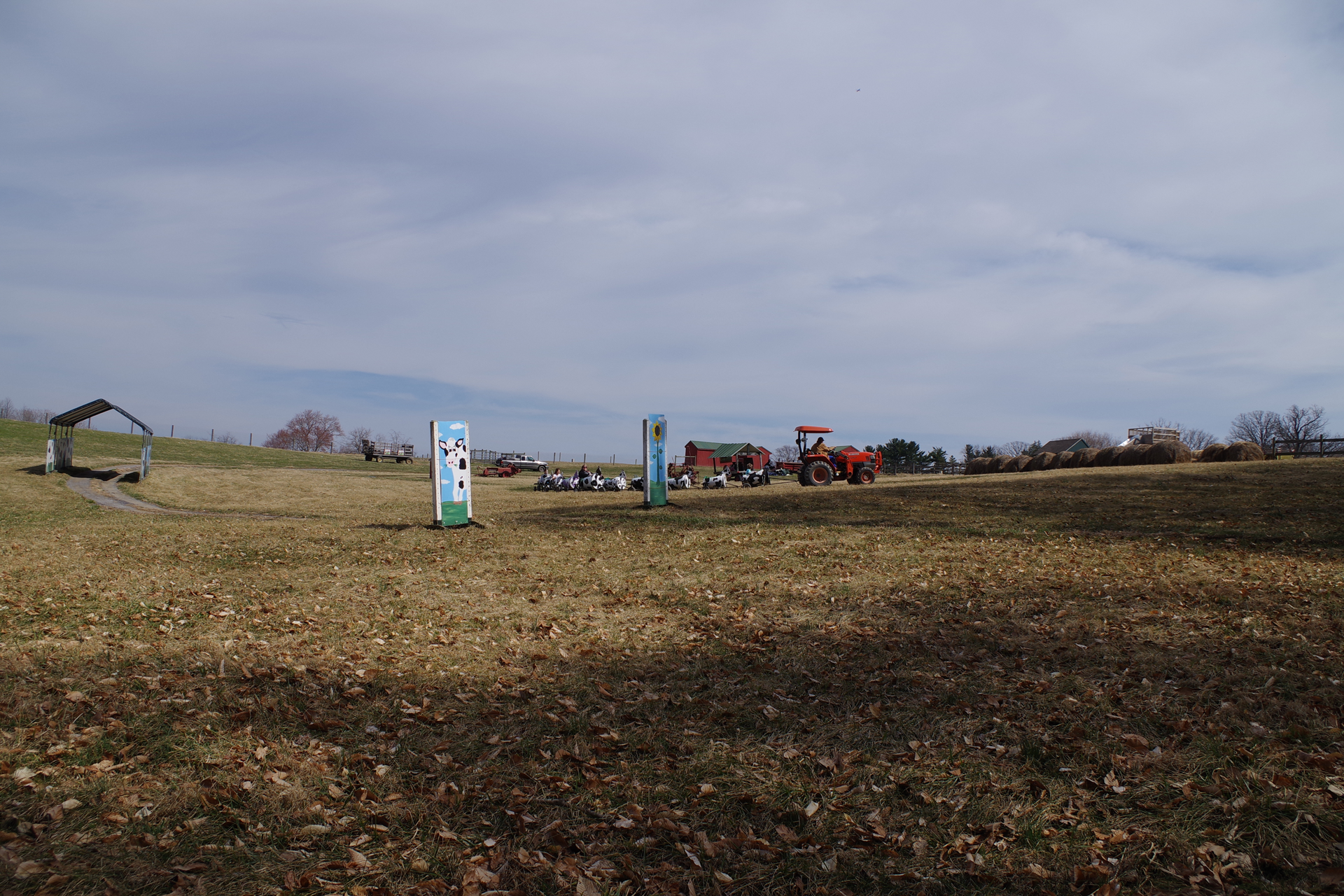
Repeating patterns, like the brickwork in this old building, often cause moiré in cameras without anti-aliasing filters. As you can see in the image below, there were no signs of moiré from the Pentax K-S2 in still images.

Low-Light Performance: A Bit Limited
The K-S2 offers an ISO range of 100 to 51,200, with the ability to either set the ISO manually or cap the highest setting used in auto mode. For the best results, keep the ISO at or below 1,600. ISO 3,200 and 6,400 aren't too bad if you plan to keep the image small (under 4 x 6 inches at 300 ppi) or post it online (up to about 640 x 480 at 72 ppi). Above that, as you'll see in the images below, most details are very soft, and speckling from the high ISO is particularly visible in shadows.
Shot at ISO 6,400, this night scene is a little underexposed in the shadows but should be fine for a small print or posting online.
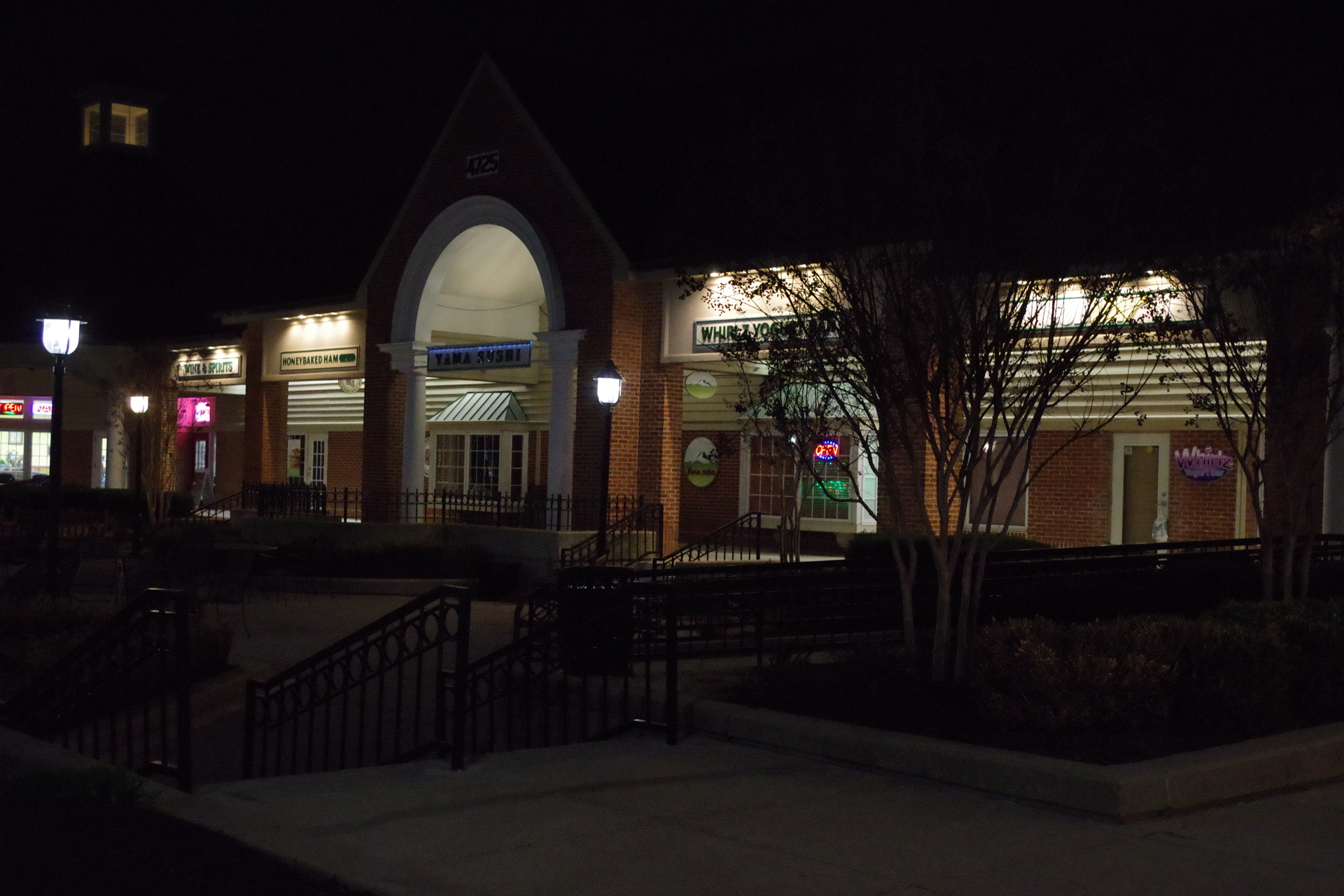
Shot at ISO 12,800, this tulip didn't fare well. Image noise is clearly visible in the flower, especially in the darker background.
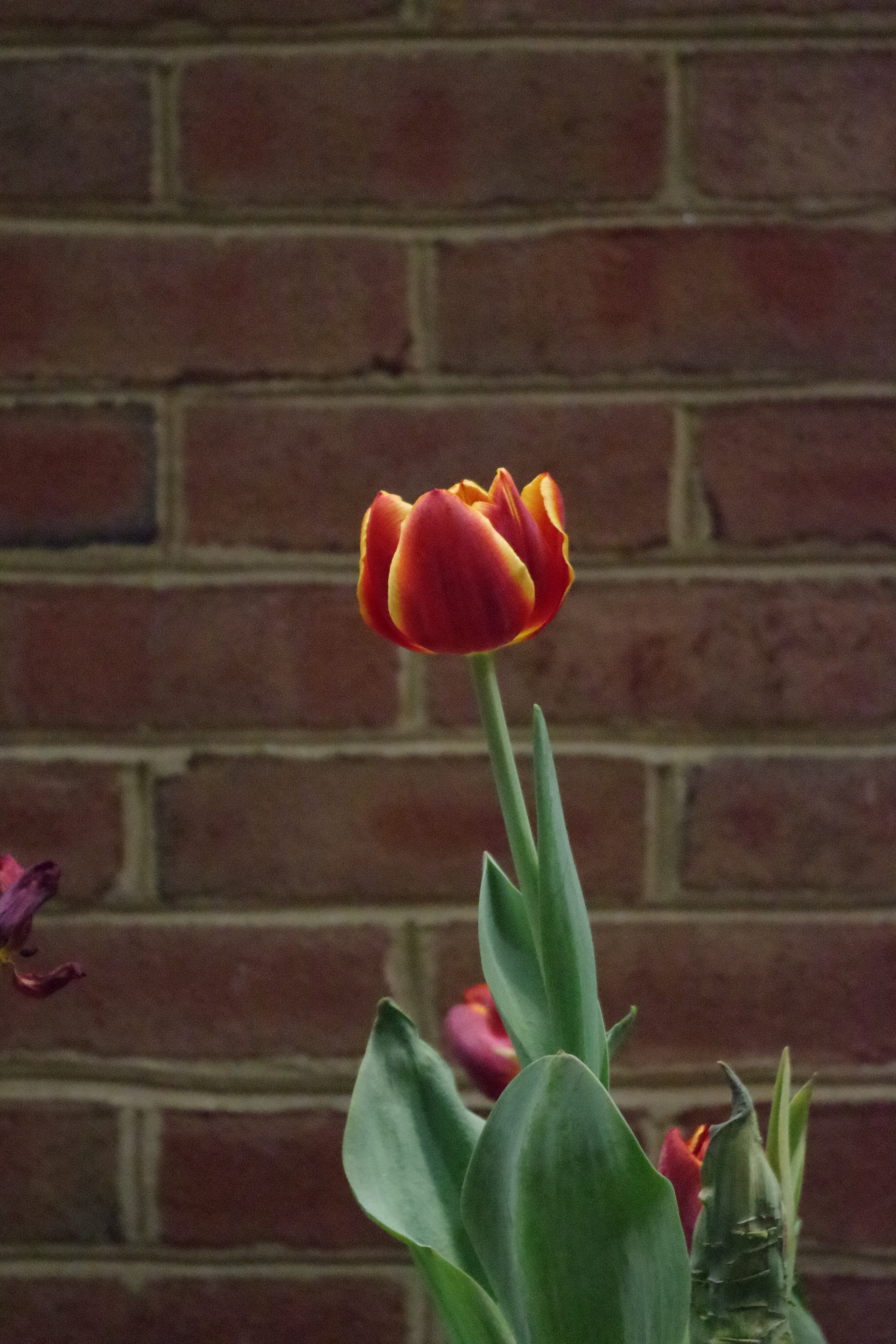
This image of flowers takes on a painterly look at ISO 25,600. But the colors are accurate, and overall, I find the photo pleasing, specifically because of the more romantic appearance.
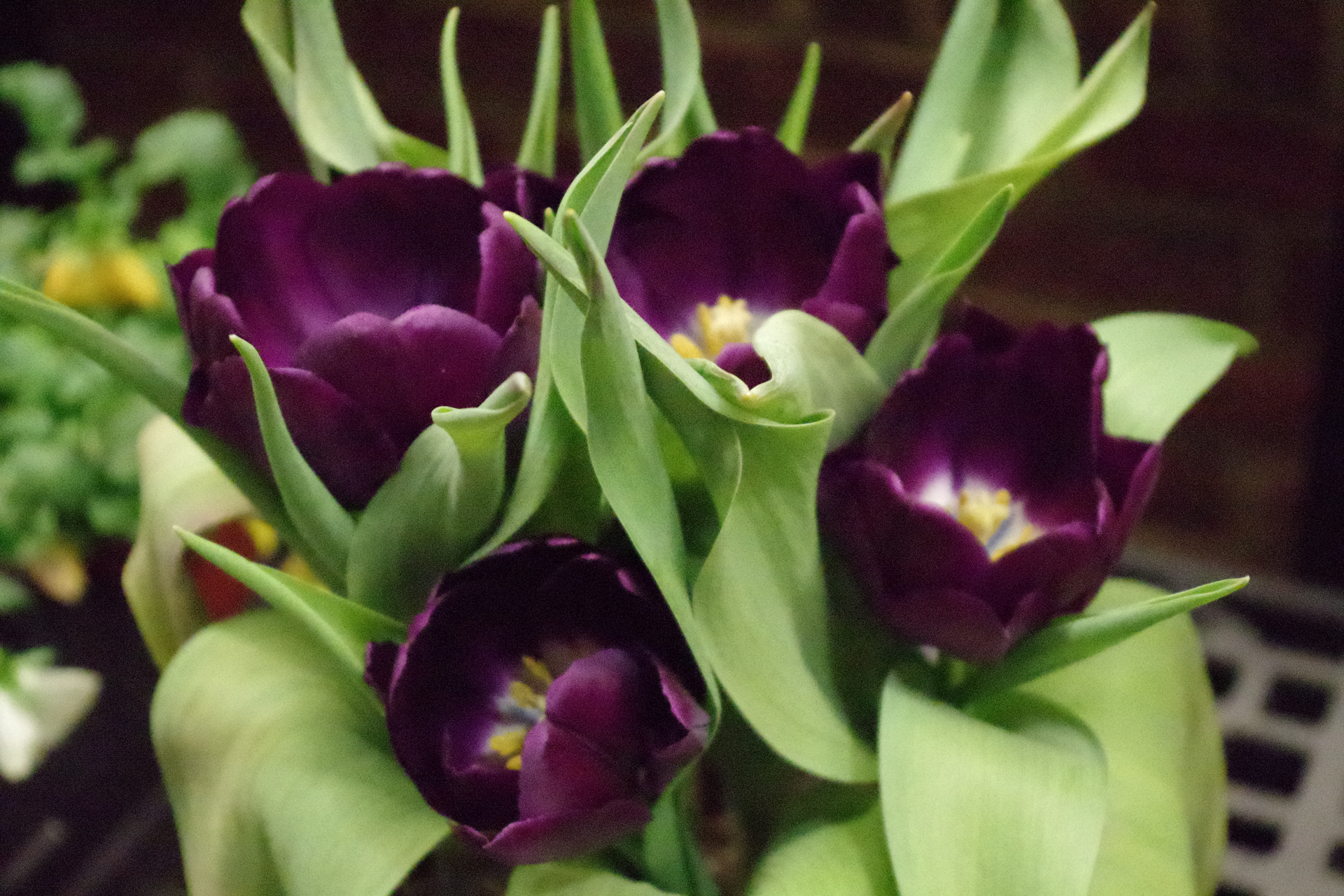
Autofocus and Speed: Generally Responsive
Overall, the K-S2's performance was responsive. Phase-detection autofocus, which you use when shooting with the viewfinder, is relatively spry in daylight conditions but slows slightly under low light. The K-S2's autofocus is not quite as speedy as the Nikon D5500's, particularly in lower-light conditions. But the K-S2 camera also offers focus peaking — highlighting on the screen the parts of the image that are in sharpest focus — a feature seen mostly in more advanced cameras.
MORE: DSLRs vs. Mirrorless Cameras: Which Is Better for You?
This little piglet was probably only a few days old but was quite lively. Using continuous autofocus, I was able to capture it as it ran to catch up with one of its siblings.
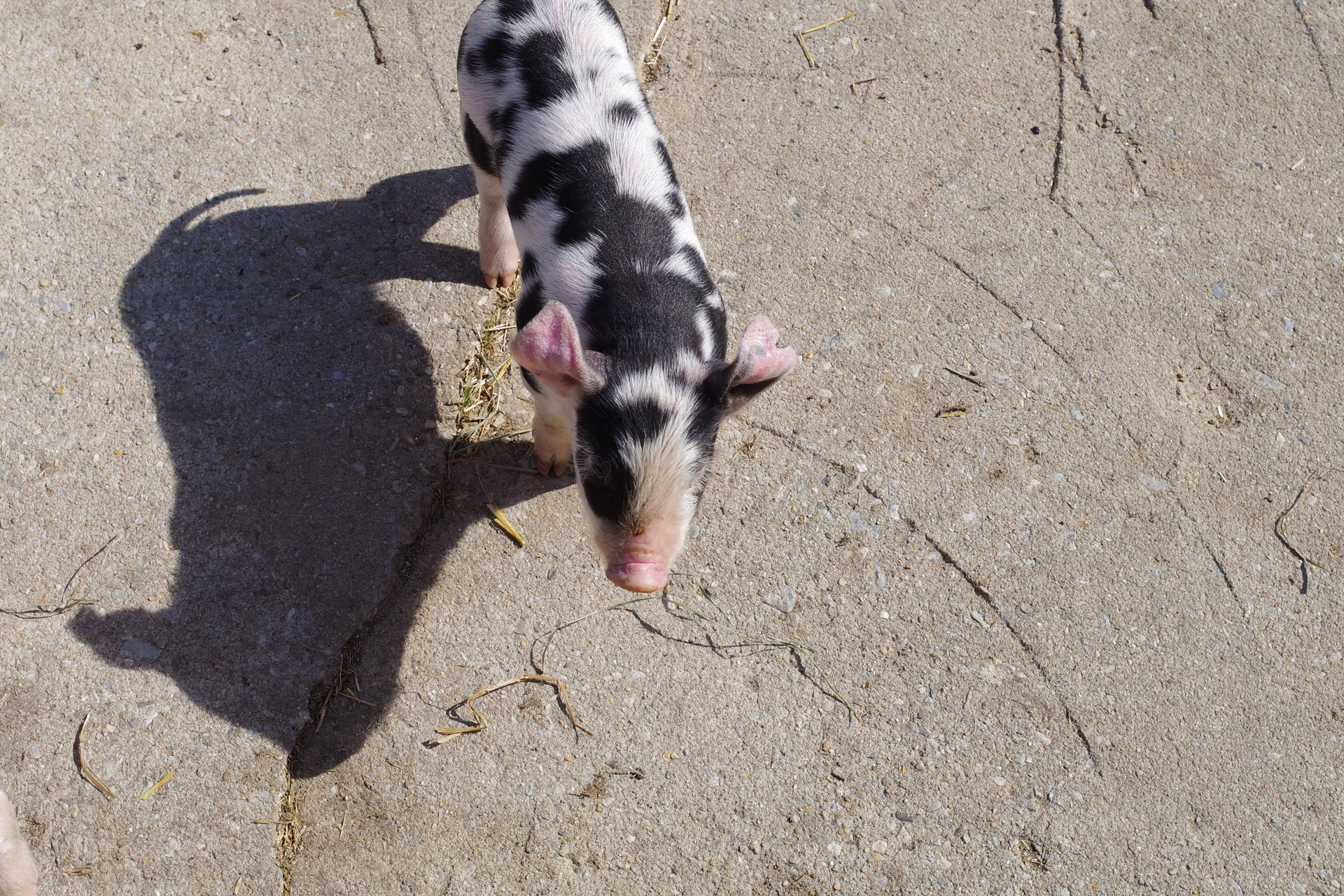
The camera's 5.5-frames-per-second continuous shooting is not much faster than the 5-fps rate of similar models such as the Nikon D5500 and the Canon T5i. But it might make a difference when you're shooting action sequences like a kid running down the soccer field and scoring a goal.

The K-S2 also bests the competition when it comes to shutter speed. While others max out at 1/4000 of a second, the K-S2 can snap a shot as fast as 1/6000 of a second to stop a quickly moving subject in its tracks.
Not surprisingly, autofocus was much less spry in live view, which uses the image sensor itself for contrast-detect AF. As I expected, live-view mode worked best for static scenes; however, it wasn't quite speedy enough to capture fast-moving subjects, such as the piglet.
Video Quality: Marred by Distortions
Despite its advanced video controls, including full manual exposure settings, the K-S2 is a poor video camera. Exposures were generally accurate and colors were well rendered, but images were slightly soft. More important, clips were plagued by distortions, including moiré, a stretching of subjects known as rolling shutter, and an overall wobbly, Jell-O-like effect. We requested a second review unit of the camera to compare results but have not yet received it.
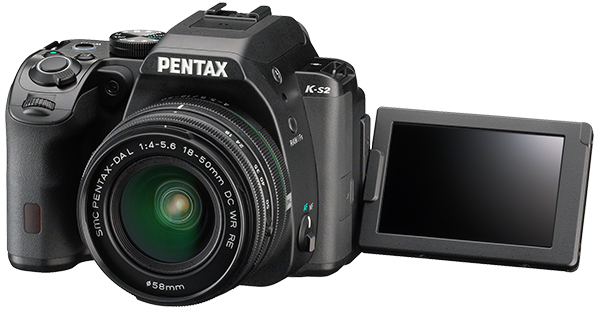
I shot all video at full HD (1920 x 1080) at 30 fps. Though rivals like the Nikon D5500 can shoot full HD at 60 fps, the K-S2 can do 60 fps only at 1280 x 720. I tried recording with image stabilization on, and then with it off. Although turning off the image stabilization seemed to help calm some of the rolling-shutter effect, the only thing that seemed to somewhat quell the distortion was holding the camera extremely still (a tripod helped) and panning very, very slowly.
This clip, which was handheld with a fence for extra stability, shows the quivering effect of moiré in the brick building; the AA Simulator, which would help resolve the moiré, is not available in movie mode. As I pan to the right, you can see the wobbly distortion of the image.
The clip below fared a little better, but wobbling is still visible even though I rested the K-S2 on the edge of a fence and tried to keep the camera very steady. It was a windy day, which was easily picked up by the camera's built-in stereo microphone.
This clip also shows some Jell-O-like effects, and because the camera lacks continuous autofocus, this tractor-drawn ride appears slightly soft. You'll need to manually focus or prefocus (which is when the focus peaking indicator comes in handy) when shooting video.
Controls: Easy to Access
A few controls set the K-S2 apart from others in its class. The mode dial is slotted for the typical Auto, Program, Aperture-Priority, Shutter-Priority, Manual Exposure and Scene modes. However, it also offers Sensitivity Priority Auto Exposure mode, where you choose the ISO and the camera automatically sets the aperture and shutter speed to match it.
Other notable controls include two command dials to adjust exposure settings and to navigate through menus. Dual dials are more convenient than the typical single dial of the Nikon D5500, for example, particularly when you're shooting in manual mode, so you can use one dial to control the aperture and the other to set the shutter speed.
Atop the grip, where you often find a red Record button for video, is instead a green button that undoes your last adjusted setting. For example, if you increase the shutter speed from 1/100 to 1/125, tapping this button will reset it to 1/100.
To engage video capture on the K-S2, you turn the power switch from On to its third position — Movie — and press the shutter button to start and stop recording. It's an unusual setup, but it wasn't long before I became accustomed to using the power switch instead of a Record button.
Wireless: Easy Setup & Advanced Remote Shooting
The K-S2 is the first Pentax DSLR with built-in Wi-Fi and is painless to set up. Those with NFC-equipped smart devices just have to touch the device to the side of the camera. Otherwise, you need to enter a password, displayed in the K-S2's Wireless menu, into your smartphone's Wi-Fi setup.
Pentax provides a free Image Sync app for Android and iOS. I wasn't thrilled with the sharing interface, though. In the iOS app, I had to press and hold an image until a virtual menu appeared on the screen. I often had to try several times to get the menu up.
More impressive is the app's remote-shooting capabilities. A host of settings can be adjusted from the Image Sync app, including white balance, aperture, shutter speed, exposure compensation and ISO. You can also enable Touch AF in order to tap the phone's screen to select the focus point.
MORE: Canon Rebel T6s and T6i DSLRs Pack Faster Autofocus Tech for Video
Battery Life: Long
The K-S2's battery life is CIPA rated at 480 shots (with 50 percent of them using the flash). Live view, Wi-Fi and video capture may shorten battery life a little, but I was able to shoot on and off for several days on a single charge.
Lenses: Good All-Weather Options
Because the K-S2 offers sensor-shift image stabilization (which Pentax calls Shake Reduction), IS is always available regardless of which of Pentax's more than three dozen lenses you select. However, to take full advantage of the camera's weather-sealed body, you need a weather-resistant (WR) lens.
The 18-50mm kit lens ($230) we used for testing — the HD Pentax DA 18-50mm f/4.5-5.6 DC WR RE — is weather-resistant and offers a full-frame-equivalent focal range of 27.5-76.5mm. It offers an impressive f/22-32 minimum aperture, which is perfect for shooting in very bright scenes like the beach. While it's a little more than 3 inches long when fully extended, the kit lens retracts to 1.6 inches when it's not in use. Zooming with the lens was relatively smooth, but it was stiff and difficult to turn during the locking and unlocking process.
While the 18-50mm kit lens isn't the sharpest optic we've ever used, it managed to deliver generally well-focused images with good detail, as you can see from the carved face and the tree bark in the image below.

Pentax offers 11 WR or AW lenses covering a broad range of focal lengths for a variety of scenarios. These include the HD Pentax-DA 300mm f/4-5.8 ED WR ($450), the SMC Pentax-DA 18-135mm F/3.5-5.6 ED AL DC WR ($500) and the SMC Pentax DA 50-200mm f/4-5.6 ED WR ($250).
Bottom Line
The K-S2's most notable feature is its weather-resistant body, which certainly places it a step ahead of the competition for photographers who like to shoot outdoors. It also offers innovative options such as ISO Sensitivity Priority mode. Overall, the feature set is fairly sophisticated and will be put to good use by enthusiasts and advanced amateurs. At the same time, the camera is relatively easy to use for those new to DSLR photography.
While its aesthetics won't be to everyone's liking and the video quality is problematic, the K-S2's weatherproofing and advanced features, such as its sophisticated remote shooting app and focus peaking, add value to the price. If you don't need the weatherproofing, the Nikon D5500 is a better choice for its somewhat better image quality and much more reliable video.
Key Specs
Model name: Pentax K-S2
Megapixels: 20.42
Type: DSLR
Price: $799.95 with 18-50mm WR kit lens
Shots per second: up to 5.5 fps
Sensor type: APS-C CMOS
AF points: 11 with 9 cross-type points
Shutter speed range: 1/6000-30 sec, Bulb
ISO range: 100-51,200
Main video resolutions/frame rates: full HD (1920 x 1080 at 30/25/24 fps), HD (1280 x 720 at 60/50 fps), VGA 640 x 424 at 30/24 fps)
Video file format: .MOV
Built-in flash: Yes
Hot shoe: Yes
Card type: Single slot: SD/SDHC/SDXC, Eye-Fi and FLU wireless card compatible
Ports: USB 2.0, HDMI out
Shots per charge (CIPA): 480
Wireless capabilities: Wi-Fi, NFC
Image stabilization: Sensor-shift
Dimensions and weight: 4.82 x 3.58 x 2.55 inches; 23.9 ounces (body only)
Follow Tom's Guide at @tomsguide, on Facebook and on Google+.
Theano Nikitas is a freelance journalist and photographer. She's been writing about photography for more than 20 years, contributing countless reviews of cameras, lenses, accessories and software packages to Tom's Guide. Her work has also appeared in dozens of other magazines and websites, including CNET, DPreview, PopPhoto, Professional Photographer and Shutterbug.
-
pentaxfellow Just turn off shake-reduction in video mode to improve the jello-effect. All Pentax videos are like thatReply
